Knowing how to change a tire is a necessary skill for all drivers. If you rely on a cell phone to save you in a roadside emergency, there’s always that chance you will forget to charge it, be out of range, or leave it at home. Flat tires can happen anywhere, and a cell phone is no substitute for knowing how to change a flat tire.
Thankfully, changing a tire isn’t all that hard! Just adhere to the following guidelines to be prepared in case you have a flat.
These items should have come with your vehicle:
Jack
Lug wrench
Fully inflated spare tire
Vehicle owner’s manual
If you have misplaced any of these items, or if your car did not come with these items, you should purchase new ones right away. And be sure you’re regularly inflating the spare tire to your vehicle manufacturer’s recommended PSI. You should check the spare’s air pressure every time you check your other tires.
Remember to check pressure every month and before long trips or carrying extra load.
Here are some items that don’t come with your vehicle but that you should stow in your trunk or glove box in case you have to change a flat tire:
Flashlight with working batteries
Rain poncho
Small cut of 2"x6” wood to secure the jack
Gloves
Wheel wedges
As soon as you realize you have a flat tire, do not abruptly brake or turn. Slowly reduce speed and scan your surroundings for a level, straight stretch of road with a wide shoulder. An empty parking lot would be an ideal place. Level ground is good because it will prevent your vehicle from rolling. Also, straight stretches of road are better than curves because oncoming traffic is more likely to see you.
Never attempt to change your tire on a narrow shoulder near oncoming traffic. Keep moving (slowly) until you find a safer spot. While driving on a flat risks ruining your rim, replacing a rim is better than being hit by an inattentive driver.
Make sure to consult your owner’s manual and review their specific steps on how to change a flat tire for your vehicle
Your hazard lights or “flashers” will help other drivers see you on the side of the road. To avoid an accident, turn them on as soon as you realize you need to pull over.
Once stopped, always use the parking brake when preparing to replace a flat tire. This will minimize the possibility of your vehicle rolling.
Wheel wedges go in front of or behind the tires to further ensure the vehicle doesn’t roll while you fix the flat tire. If you’re changing a rear tire, place these in front of the front tires. If your flat tire is at the front, put the wheel wedges behind the rear tires.
Bricks or large stones will work just as well as “real” wheel wedges. Just be sure they’re large enough to stop the car from rolling.
If your vehicle has a hubcap covering the lug nuts, it’s easier to remove the hubcap before lifting the vehicle with the jack.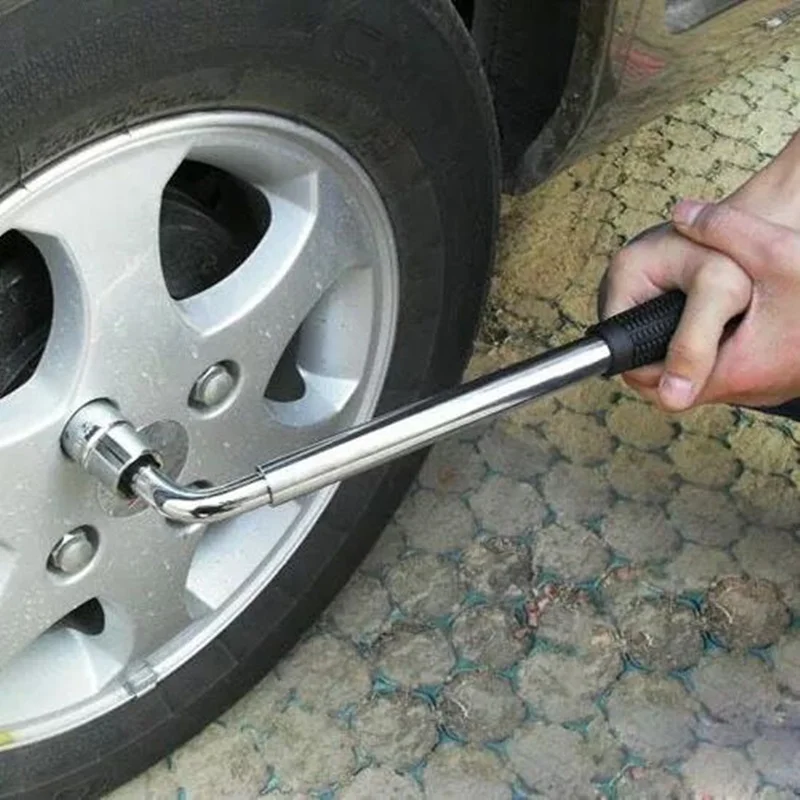 If your lug nuts are exposed, you can skip ahead to Step 6.
If your lug nuts are exposed, you can skip ahead to Step 6.
Use the flat end of your lug wrench to remove the hubcap. This will work for most vehicles, but some hubcaps need a different tool to come off. Consult your owner’s manual for proper hubcap or wheel cover removal procedures.
Using the lug wrench, turn the lug nuts counterclockwise until you break their resistance. You may have to use force, and that’s ok. Use your foot or all of your body weight if necessary.
Loosen the lug nuts about ¼ to ½ of a turn, but don’t remove them completely yet. Save that for when it’s time to remove your tire/wheel from the vehicle.
The right place for the jack is usually beneath the vehicle frame alongside the tire that’s flat. Many vehicle frames have molded plastic on the bottom with a cleared area of exposed metal specifically for the jack. To safely lift and avoid damage to the vehicle, follow the instructions for jack placement in your vehicle owner’s manual.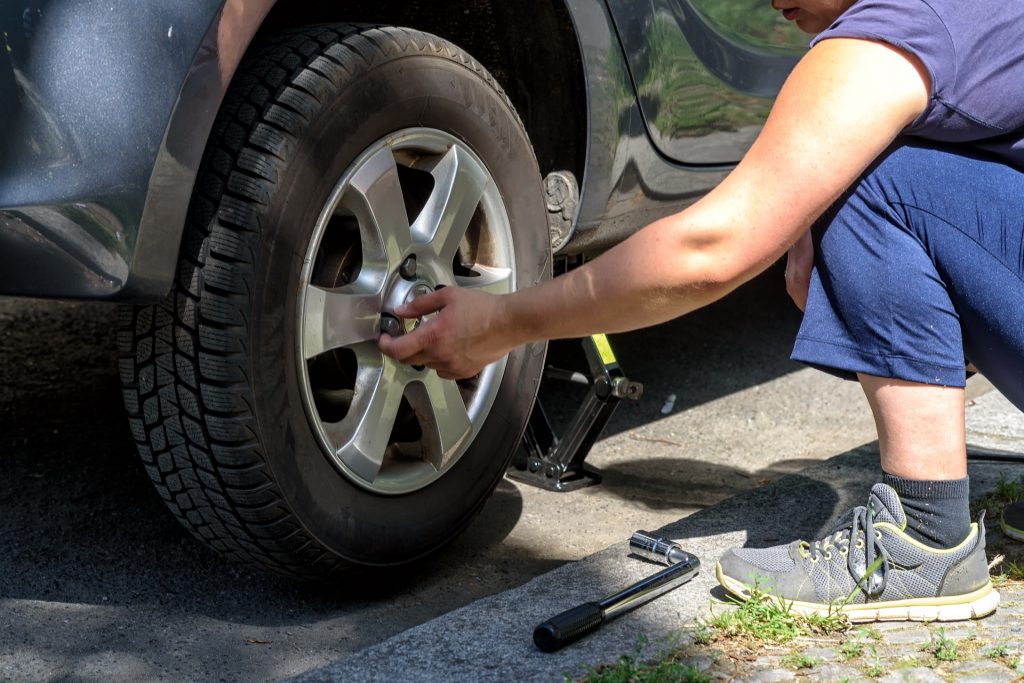
To prevent the jack from settling under the weight of your vehicle and coming off balance, place a small cut of 2x6” wood beneath it before attempting to raise your vehicle. This tactic is especially helpful on asphalt.
With the jack properly positioned, raise the vehicle until the flat tire is about six inches above the ground.
Never put any part of your body under the vehicle during or after raising the vehicle with the jack.
Now it’s time to remove the lug nuts all the way. Since you've already loosened them, you should be able to unscrew them mostly by hand.
Gripping the tire by the treads, pull it gently toward you until it’s completely free from the hub behind it. Set it on its side so that it doesn’t roll away.
Now place the spare on the hub by lining up the rim with the lug bolts. Push gently until the lug bolts show through the rim.
Put the lug nuts back on the lug bolts and tighten them all the way by hand. Once they are all on, check each one again, tightening as much as possible. You will tighten them with the wrench after lowering the vehicle to the ground.
Use the jack to lower the vehicle so that the spare tire is resting on the ground but the full weight of the vehicle isn’t fully on the tire. At this point, you should tighten the lug nuts with the wrench, turning clockwise, as much as you can. Push down on the lug wrench with the full weight of your body.
Bring the vehicle all the way to the ground and remove the jack. Give the lug nuts another pull with the wrench to ensure they’re as tight as possible.
If the hubcap you took from the flat tire will fit your spare, put it in place the same way you removed it initially. If it doesn’t fit, stow it away with the tire when you stow your equipment.
If it doesn’t fit, stow it away with the tire when you stow your equipment.
You have before you a jack, a lug wrench, wheel wedges, your flat tire, and possibly a hubcap. Don’t forget to put all of them in your vehicle before driving away.
You should check the tire pressure of the spare tire to make sure that it is safe to drive on. “T-Type” temporary spares, also called “mini-spares,” require 60 psi (420 kPa). If the tire needs pressure, drive (slowly) to a service station immediately.
Temporary spare tires aren’t made to drive long distances or at high speeds, so drive cautiously until you’re able to visit a tire technician. A professional should be able to determine whether your tire needs a repair or if it’s time to replace it.
Aside from taking your tire to a professional, the above procedure shouldn’t take more than 15 to 30 minutes to change a tire. Just be sure you don’t leave out any steps.
Just be sure you don’t leave out any steps.
It’s beneficial practice changing a tire in your garage or driveway to ensure you’re ready to handle this situation if it ever happens to you.
Knowing how to fix a flat tire is great, but regular tire maintenance is even more important. In addition to reviewing this guide regularly, remember to do the following:
Keep your tires properly inflated
Rotate your tires according to the manufacturer’s guidelines
Monitor for tread wear
All of these precautions will extend the life of your tires and reduce the likelihood of a flat. While there’s no way to prevent flat tires completely, proper care can improve performance and ensure your tires last as long as possible.
There’s never a good time for a flat. That’s why Bridgestone DriveGuard tires are masterfully engineered to keep you moving for up to 50 miles at speeds up to 50 MPH without disruption.
There’s never a good time for a flat. That’s why Bridgestone DriveGuard tires are masterfully engineered to keep you moving for up to 50 miles at speeds up to 50 MPH without disruption.
See Details Find Your Fit
Changing a tire is a relatively simple affair and most cars come with the equipment to perform the procedure as part of a basic vehicle-maintenance package. The car's owner's manual should also have instructions on where your tire changing equipment is located and the proper procedures.
A basic a tire changing kit typically includes:
Advertisement
Additional tools, depending on the make, model and year of your vehicle may include:
Jacks come in several varieties -- scissor jacks, floor jacks, bottle jacks and even bumper jacks.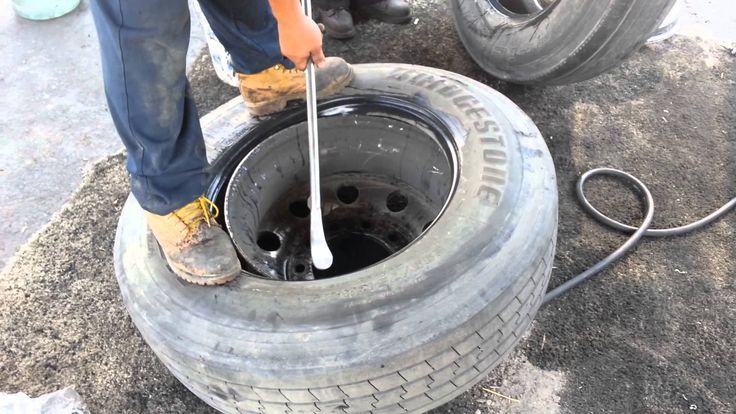 A scissor jack is the most common type and uses a mechanical scissor mechanism to lift the car. A bottle jack is more powerful but less compact and uses hydraulic fluid to lift the car.
A scissor jack is the most common type and uses a mechanical scissor mechanism to lift the car. A bottle jack is more powerful but less compact and uses hydraulic fluid to lift the car.
The tire rim is held to the wheel hub by lug nuts screwed on to wheel studs. Before the spare tire can be fitted to the car the old rim and flat tire needs to be removed. Before this is accomplished, the lug nuts must be loosened and this is done with the lug wrench. A lug wrench is essentially a large socket wrench with one socket that matches the size of the lug nuts on your wheels. The length of the handle adds mechanical advantage -- the longer the handle, the more force you can exert on the nut. The pry bar on the other end is used to remove the hub cap and sometimes to pry the rim off the wheel hub if it's stuck on with rust or dirt.
Finally, there's the spare tire. Spares are either full-size or temporary (often called "donut" or "space saver") spares. A full-size spare offers more advantages as far as safety is concerned, but it's difficult to store, especially in smaller cars.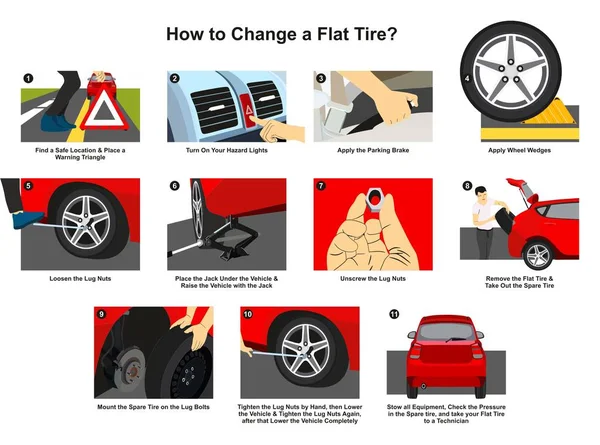 It also weighs more and is harder to manage onto the wheel hub at ground level. A donut spare is easier to store and easier to manage on to the hub. However, it's generally less safe, usually limiting driving speed to less than 50 miles per hour (80.5 kilometers per hour) and a range of less than 60 miles (96.6 kilometers). Good car maintenance means checking the air pressure in the spare tire on a regular basis, too. It only takes a couple of minutes but may save you hours of aggravation someday.
It also weighs more and is harder to manage onto the wheel hub at ground level. A donut spare is easier to store and easier to manage on to the hub. However, it's generally less safe, usually limiting driving speed to less than 50 miles per hour (80.5 kilometers per hour) and a range of less than 60 miles (96.6 kilometers). Good car maintenance means checking the air pressure in the spare tire on a regular basis, too. It only takes a couple of minutes but may save you hours of aggravation someday.
The additional items listed are needed by certain cars rather than all cars. Wheel locks are a specially keyed lug nut socket designed to keep thieves from stealing your wheels. While a good idea, the locks are often lost, misplaced or simply disregarded until necessary -- but by then it's too late. If your car has wheel locks, tape the socket to the jack or to the inside of your glove box so it won't be lost.
Some car models store the spare under the car. The spare is lowered to the ground by turning a post that lowers the spare on a wire. This post is turned with an extension bar that's also used to help drag the spare out from under the car. This part of the car is often neglected during routine automotive maintenance. Every so often, and before long trips, make sure the spare will lower and the action on the mechanism is not rusted or corroded.
This post is turned with an extension bar that's also used to help drag the spare out from under the car. This part of the car is often neglected during routine automotive maintenance. Every so often, and before long trips, make sure the spare will lower and the action on the mechanism is not rusted or corroded.
Many European cars use wheel bolts rather than wheel studs. Wheel studs stay on the hub and serve as a mounting surface for the spare. Wheel bolts screw into the hub and come off with the tire. With this type of system, putting the tire back on the car means having to manage the tire with a bolt through a rim hole and being able to wrestle the whole thing into position to screw the bolt in. This system is difficult to deal with even in controlled conditions, let alone on the side of a busy road. Wheel studs are a lot easier to deal with as the studs remain attached to the wheel hub and allow you to hang the tire on them and then replace the lug nuts.
Cite This!
Please copy/paste the following text to properly cite this HowStuffWorks. com article:
com article:
Eric Baxter "How to Change a Tire" 5 October 2009.
HowStuffWorks.com. <https://auto.howstuffworks.com/under-the-hood/vehicle-maintenance/change-tire.htm> 17 February 2023
When the seasons change, don't forget to change the wheels on your cars. One of the easier options in this case is to go to a tire shop or call a mobile tire shop. If you want to save money, you can replace the wheels yourself, and have the balancing done by professionals. In order to change wheels, you need to have a number of tools on hand. But not all car lovers know what is needed and which tools are best to take.
When changing wheels, the machine must be raised - this requires a jack. Now there are many options for jacks. They differ not only in appearance and price, but also in the degree of impact. Jacks are divided according to their impact into the following types:
 The principle of operation is the movement of the piston with the help of fluid in the drive pump. A distinctive feature is the high load capacity in relation to the low effort in the work.
The principle of operation is the movement of the piston with the help of fluid in the drive pump. A distinctive feature is the high load capacity in relation to the low effort in the work. Different types of jacks differ in design, which affects the cost of this tool. Based on the above, you can choose a jack that is suitable for a particular car. In order to unscrew the bolts on the wheels, you will also need a tool that is specifically designed for this.
Based on the above, you can choose a jack that is suitable for a particular car. In order to unscrew the bolts on the wheels, you will also need a tool that is specifically designed for this.
There are many tools for loosening and tightening bolts. The main thing is to know what diameter the bolts on the wheels have, after which you can select the right tool.
Types of tools:
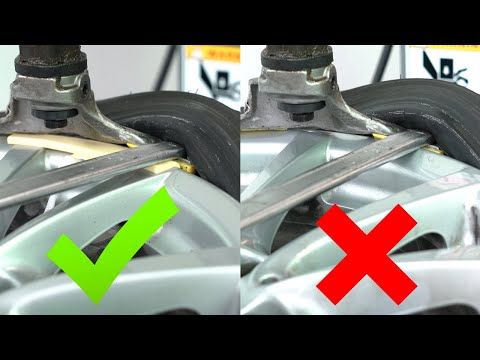 The main distinguishing feature is the control of tightening of connections.
The main distinguishing feature is the control of tightening of connections.
In addition to the jack and keys, you also need a car support, in other words, a “shoe”. It is placed under the car for fixation.
Here are the basic wheel change tools you will need for the job.
Roadside emergencies can happen to anyone, at any time. In such a situation, you may need to replace the tire yourself. You will be more confident by practicing beforehand how to change a tire. First, you need to know where to find the jack, wrench, wheel chocks, and spare tire. Then you should familiarize yourself with how to use these tools to complete the process. This practice will reduce the stress of the emergency and give you more confidence in the situation.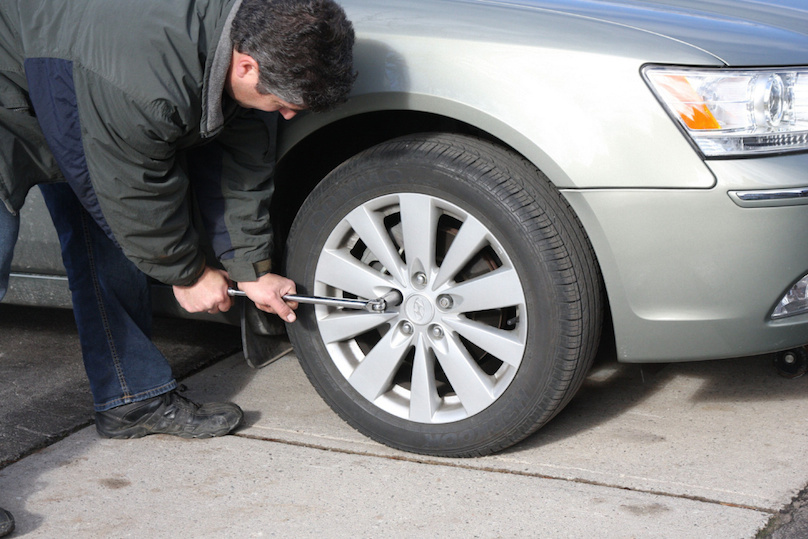
If you ever find yourself in a difficult situation where your tire flattens or fails while driving, don't panic. Instead, focus on finding a safe place to stop. You may need to ride a tire that is still flat for a while to ensure your safety. Once you find a safe parking area, you can start changing your tire as you practice.
The basic tools you will need to change tires are probably supplied with your vehicle. Consult your owner's manual for the location of your jack, lever, and spare tire. You should become familiar with these tools in a controlled setting. Learning to change a tire at home is better than learning in a potentially dangerous situation on the road.
If a tire fails while driving, take the following steps to ensure your safety:
Park or stop in a safe place first. Turn on your emergency lights and drive as far away from the road as possible. This may not be possible if you are on a freeway, so don't be afraid to keep going until the next exit.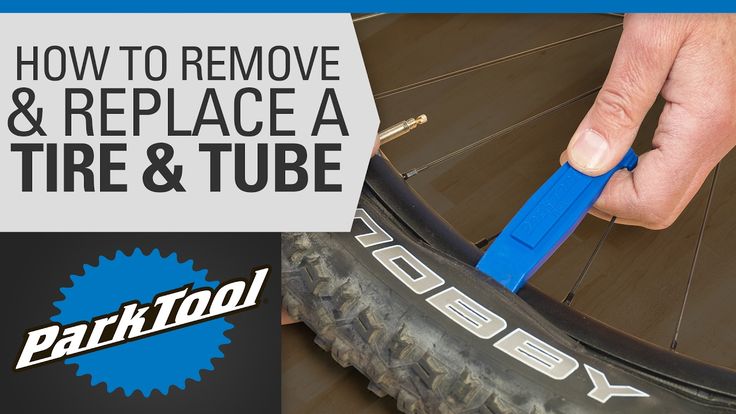
Try to find a gas station, parking lot, or any flat surface to change a tire. Unlike dirt or grass, the hardness of the pavement will prevent the jack and car from falling into the ground. Never change tires on a hill or on a curve where you cannot be seen by other vehicles.
After parking, stabilize the vehicle by applying the emergency brake. Leave manual transmission vehicles in park. Next, place chocks or stones behind the tires opposite the one being replaced. These heavy items will further protect the car when changing tires. Once the car is secure, have a wrench, jack and spare tire ready.
Remove your vehicle's cap, if equipped, before changing tires. If your cap is held on by nuts, you can leave it on. If it is not, you can remove it with a cap, screwdriver, or the flat end of a jack handle or a lever wrench. You can do this carefully by prying in a few places, as if you were removing the lid of a can of paint. Skip this step if your wheel does not have a hubcap.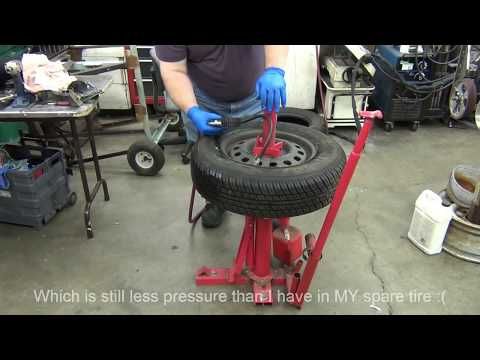
Before using the jack to raise the tire, you will need to loosen the lug nuts that hold the wheel attached to the assembly. Loosen the first mounting nut by turning the wrench one turn counterclockwise. Then loosen the clamping nut directly opposite the first one and then further against this one. You will end up moving in the shape of a star. If the clamp nuts are tight, you can push them with your body weight.
After loosening all wheel nuts, use a jack to raise the vehicle until the tire is completely off the ground. Refer to your vehicle owner's manual for instructions on how to best position and operate the jack. Lower the jack immediately if your vehicle seems unstable at any point. You may need to move the jack or move the car to a flatter spot. Never position yourself where the vehicle could land on your feet, arms, or body when the vehicle is raised.
Use a wrench to completely remove the loose lug nuts and place them in a safe place. You can use the cap as a bowl to hold them, or place them somewhere inside the car.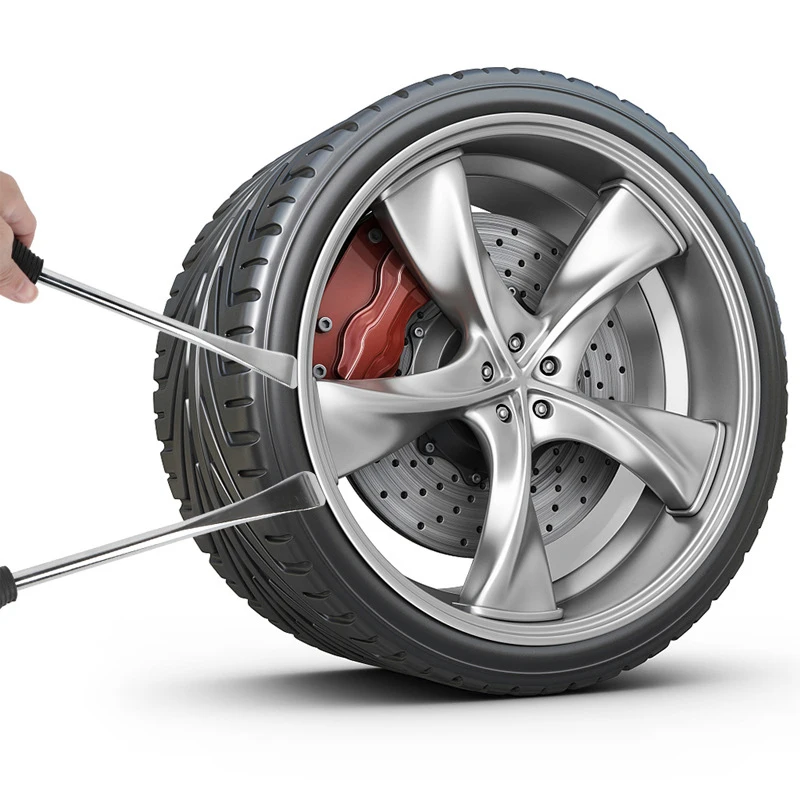 These methods will prevent the stud nuts from being strewn across the pavement from getting lost.
These methods will prevent the stud nuts from being strewn across the pavement from getting lost.
By removing the lug nuts, you can remove the wheel and flat tire from the hub. Grab the flat tire with both hands and pull it straight up to your chest. After removing the flat tire, place it under the vehicle next to the jack. So the tire can catch the car if the jack slips.
Now that everything is removed, you can attach the spare wheel. While holding the spare, align it with the wheel bolts and slide it securely onto the assembly. Install and hand tighten the eye nuts in the same star pattern that was used to remove them. Continue tightening each mounting nut until each nut is as tight as it can be done by hand. Make sure you don't apply so much force that the car can wobble and knock it off the jack.
Then turn the jack handle to lower the vehicle until the tire touches the ground and can no longer spin freely. Now you can fully tighten the nuts with the wrench, moving in the appropriate star pattern to properly secure each nut in place.